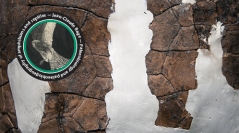

 Comptes Rendus Palevol
20 (26) - Pages 555-583
Comptes Rendus Palevol
20 (26) - Pages 555-583The Early Pleistocene site of Pietrafitta (central Italy) produced a rich vertebrate assemblage from the Late Villafranchian Land Mammal Age (late MN18). Geological and paleobotanical data from Pietrafitta indicate a lacustrine environment, surrounded by a humid deciduous broadleaved forest with a temperate climate. The vertebrate assemblage consists of at least 40 taxa including actinopterygians, amphibians, reptiles, birds, and mammals. Here, we concentrate on the ichthyofaunal and herpetofaunal remains. The ichthyofauna includes Barbus Cuvier and Cloquet, 1816, Scardinius Bonaparte, 1837, aff. Squalius Cuvier, 1817, and Tinca Cuvier, 1817. The two anuran genera are the large-sized alytid frog Latonia Meyer, 1843 and the “green frog” Pelophylax Fitzinger, 1843. Three snake precloacal vertebrae were recognized, one attributed to Colubrines indet., another one to Natrix sp. Laurenti, 1768, and the largest and most complete vertebra is referred to the genus Vipera s.l. Laurenti, 1768 (cf. gr. “Oriental vipers”). The chelonian fossils, including some complete carapaces and plastrals, are attributed to the European pond turtle (Emys gr. Orbicularis Linnaeus, 1758) and Hermann’s tortoise (Testudo hermanni Gmelin, 1789).
Pleistocene, Villafranchian, herpetofauna, ichthyofauna, Latonia, Vipera